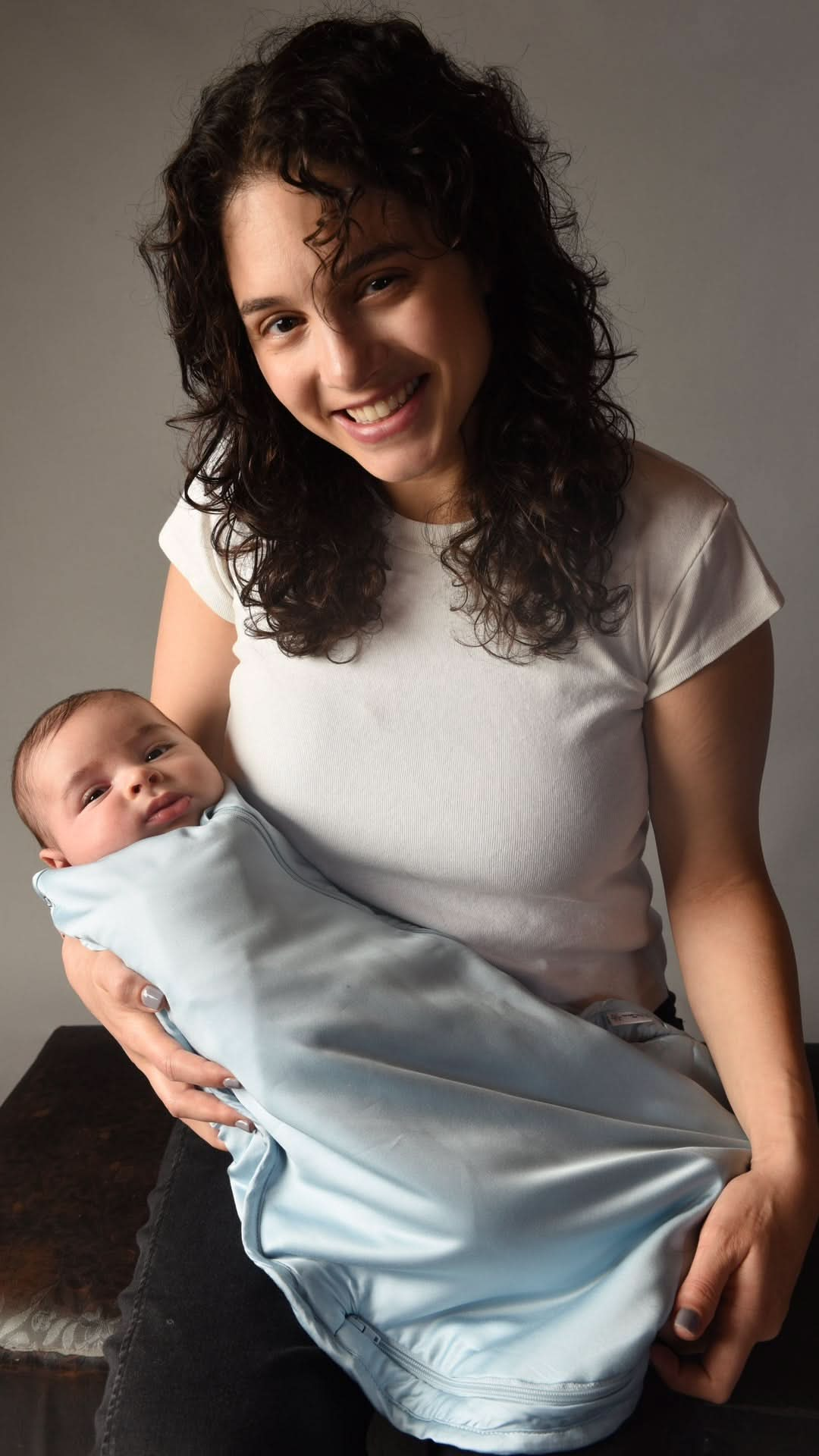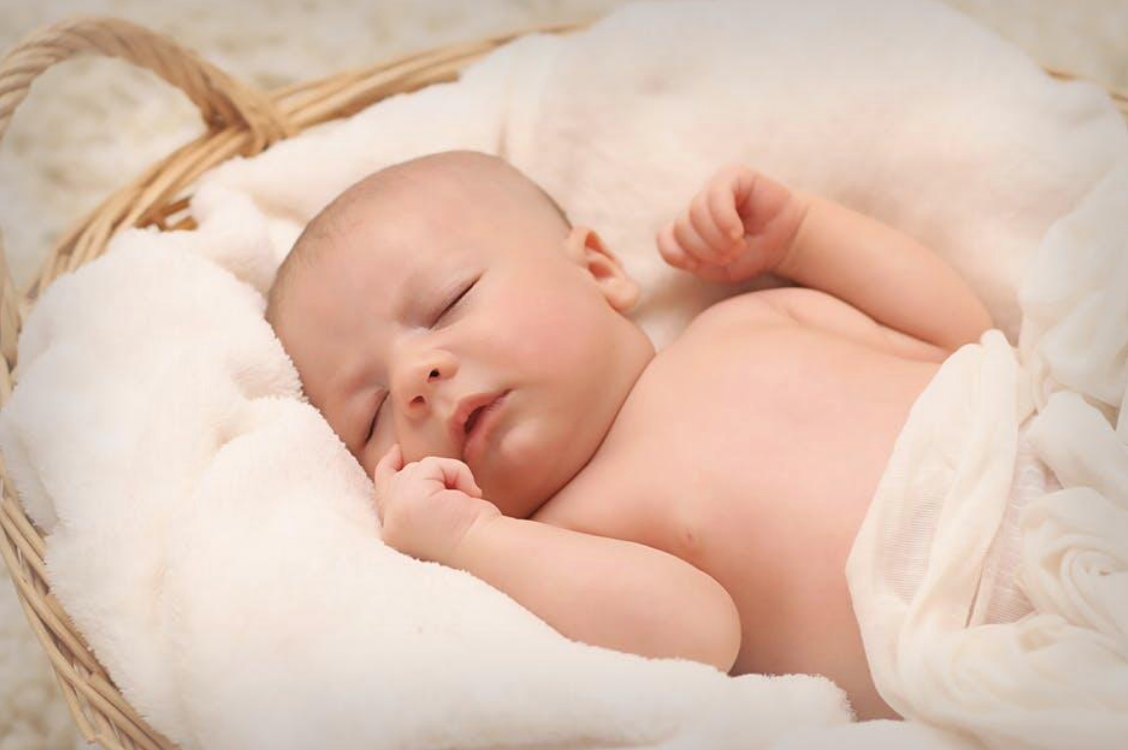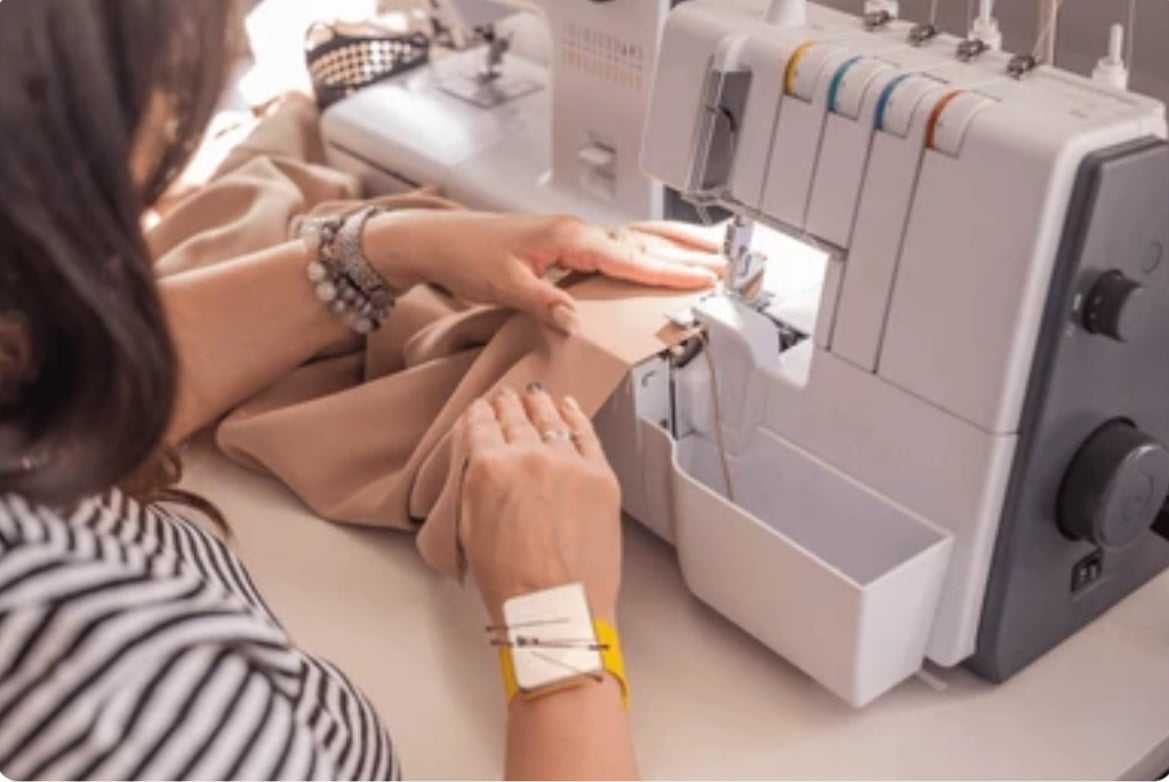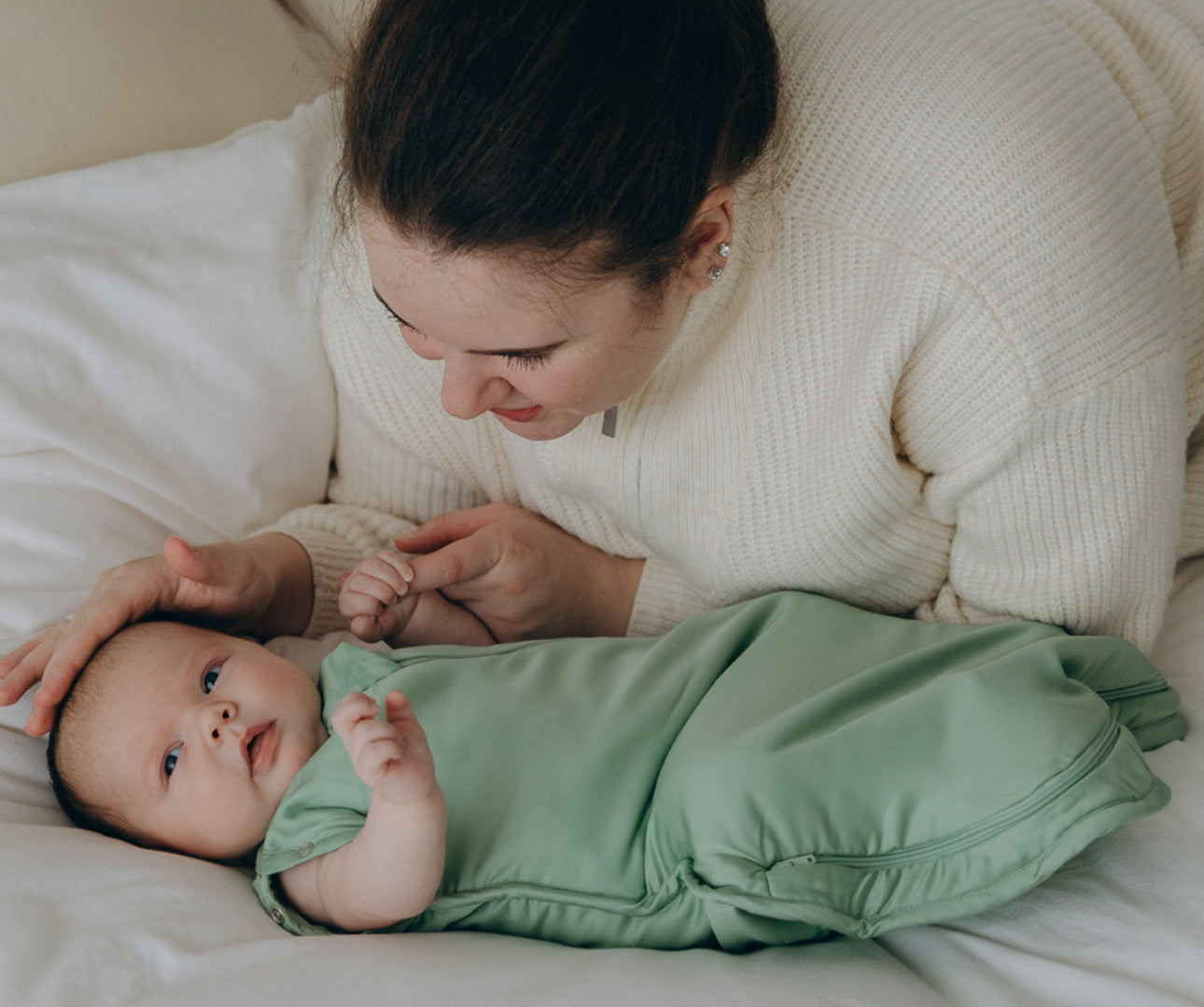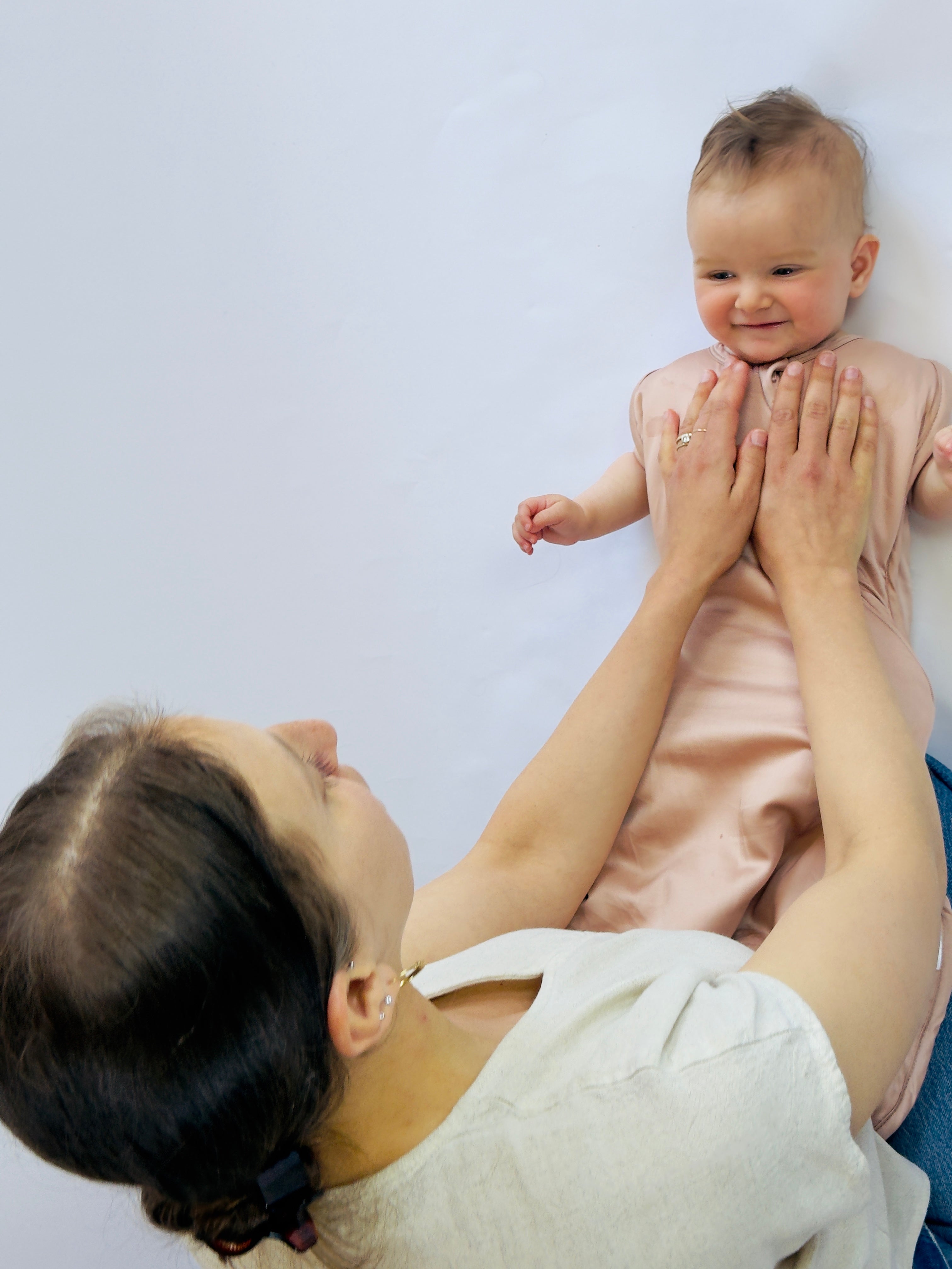
According to a study published by the National Institutes of Health, sleep problems arising in babies persist in around 21% of children up to 36 months of age. Babies wake for all kinds of reasons, such as hunger or simply needing comfort.
One major cause often goes unnoticed: discomfort from their sleep environment. Small changes in room conditions or not using a thermo-regulating sleeping bag can lead to unnecessary disruptions.
When babies sleep better, so do their parents. Let's take a look at the overlooked factors that can make a substantial difference in nighttime rest and how a sleeping bag or swaddle sack for infants can help.
Room Conditions That Disrupt Sleep
A nursery that feels cozy at bedtime might not stay that way through the night. Drafts and poor insulation can create discomfort, causing a baby to wake up. Small temperature shifts, even ones parents don't notice, can be enough to disturb baby's rest.
Sleepwear that adapts to these changes helps maintain a steady comfort level. Without it, a baby's body must work harder to adjust, often leading to wakefulness.
Parents who focus on consistent room conditions can help their baby sleep more soundly. What can cause unexpected changes in comfort?
- Cool air from windows or doors
- Heating systems that fluctuate overnight
- Lack of proper insulation in walls or flooring
- Placing the crib near windows, vents or exterior walls
- Sleepwear that doesn't adjust to room conditions
Addressing these issues helps create a more stable sleep environment.
The Problem with Overheating
Too much warmth can be just as disruptive as being too cold. Thick blankets or a stuffy room can lead to:
- Sweating
- Discomfort
- More frequent wake-ups
Some babies also develop rashes or skin irritation from excessive heat. Many parents assume their child needs extra layers at night, but this often leads to restlessness.
Sleepwear made from sustainable, moisture-wicking materials can prevent overheating while still keeping the baby secure. Checking a baby's neck or back is the best way to determine if they're too warm. Keeping sleepwear light and breathable reduces unnecessary waking.
Waking Up From Feeling Too Cold
Babies lose heat more quickly than adults, especially when they move around in their sleep. Those who kick off blankets or sleep near drafty areas may wake up chilly and unsettled.
Some materials don't provide enough insulation, leaving infants uncomfortable by early morning. The right sleepwear ensures warmth without the need for extra layers or loose blankets. When babies feel comfortably covered and snuggled, they sleep longer without interruption.
Parents who check their baby's skin temperature can better understand their nighttime needs. Signs that a baby is waking due to discomfort from cold:
- Hands and feet remain cool for long periods
- Frequent wake-ups despite being well-fed
- Skin appearing slightly pale in the morning
- Curling into a ball during sleep for warmth
- Unexplained fussiness at certain hours of the night
Adjusting sleepwear and room setup can help prevent these disruptions.
The Wrong Sleepwear Choices
Not all baby clothing supports restful sleep. Some fabrics trap sweat, while others don't provide enough coverage.
Synthetic materials like polyester, spandex also known as elastane often cause overheating due to their poor breathability and how they trap heat and moisture, while overly loose outfits leave babies exposed. Natural fabrics, like eco-friendly bamboo and cotton, balance comfort by allowing airflow while still feeling soft and cozy.
Parents should also consider fit, as something too snug can restrict movement, while something too loose can shift during sleep. Making the right choice in sleepwear keeps babies comfortable all night.
Nighttime Temperature Drops
Even if the nursery feels fine at bedtime, conditions often change by morning. Many homes cool down overnight, leading to restless sleep for babies who aren't properly dressed. The best solution adapts to these shifts by offering warmth without trapping heat.
Some parents also place cribs too close to windows or poorly insulated walls, exposing their child to sudden drafts. A well-thought-out sleep setup ensures a baby remains comfortable until morning. How to manage overnight temperature dips:
- Keep cribs away from exterior walls or windows
- Use sleepwear designed to adjust to changing conditions
- Check for drafts that could disrupt sleep
- Layer sleep clothing to allow for minor adjustments
- Maintain a consistent, moderate room temperature overnight
These simple steps help prevent unexpected wake-ups. Using a lightweight baby swaddle or sleeping bag is also a great way to regulate temperature.
Adjusting for Seasonal Changes
What works in summer doesn't always work in winter. Many parents don't realize how much their baby's nighttime clothing should change with the seasons. Using the same setup year-round can lead to discomfort, whether from overheating in warm months or not having enough coverage in cold weather.
The best approach is to select adaptable sleepwear that works across different conditions. A sleeping bag for cold weather that will keep your infant warm throughout the night while keeping your baby cool during hot seasons.
The Role of Breathability in Comfort
Airflow affects how deeply a baby sleeps. When sleepwear restricts ventilation, it can cause discomfort that leads to frequent wake-ups. A well-designed sleeping bag made from breathable materials prevents dampness from building up, keeping the fabric feeling fresh all night.
Proper airflow also reduces irritation, making it ideal for babies with sensitive skin. Babies tend to sleep longer when their clothing allows for natural circulation.
Soft, breathable fabrics provide a soothing sleep environment without feeling heavy or restrictive. The right materials make a noticeable difference in nighttime comfort.
How Movement Affects Sleep Quality
Babies are constantly adjusting their position during sleep, but restrictive or poorly fitted sleepwear can make that difficult. Tight fabrics may limit natural movement, causing frustration and wake-ups. Quality thermal sleeping bags often have enough room for movement.
On the other hand, overly loose materials can bunch up, creating discomfort. A well-fitted design allows freedom of movement without becoming restrictive. Babies who can stretch and shift positions comfortably tend to sleep more soundly.
Don't Overlook Thermo-Regulating Sleeping Bag
Babies are sensitive to temperature shifts, and the wrong sleepwear can lead to restless nights. A thermo-regulating sleeping bag can provide a simple solution for maintaining a baby's comfort overnight.
